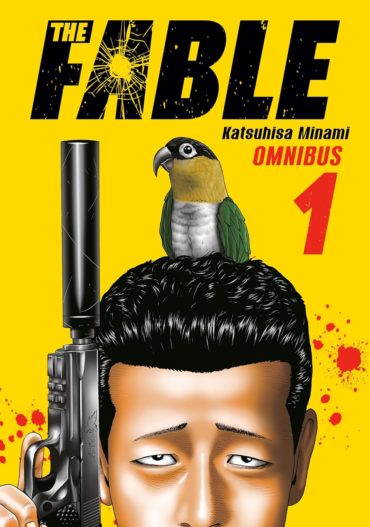The Fable Omnibus 1 Review
While most descriptions of The Fable define it as a drama or a thriller, this manga series seems to dip its toes into other genres as well, making for a wide-ranging and diverse read.
“The Fable” in question is the nickname given to the title character, whose birth name is never revealed. Fable works as a hitman in Japan’s underworld and is one of the best, having killed over seventy people in a six-year period, usually via a silenced pistol or with a finger-blade if they get close. However, because he has been so good at his job, Fable is ordered by his boss to now lie low for a year.
Thus Fable and his female getaway driver, whose real name is also never disclosed, are both given aliases, Akira and Yoko Sato, told to act as if they are brother and sister, and are ordered to hide out in Osaka under the protection of a yakuza boss, Hiroshi Hamada of the Maguro clan. Fable/Akira simply has to live out a whole year quietly, which most importantly means no killing, which is difficult when it is all you know how to do.
Sure enough, he gets into trouble straight away. Partly this is because of his straightforward, tactless manner. When he meets with Hamada and his second-in-command “Captain” Takeshi Ebihara, he can’t help but mention that he can see Takeshi’s nose hair. Takeshi ends up being suspicious of Fable and tries certain methods to provoke his killer instinct. However, Fable is smart enough to avoid going too far. He personally just wants to relax, watch his favourite comedian, and settle down, which includes among other things getting a pet black-headed parrot which he calls Captain.
As mentioned, most describe The Fable as a thriller or drama, but there is much more to it than this. One of the things that strikes me about it is the use of humour. Indeed, if you look at the cover, designed by Abigail Blackman, which depicts Fable with Captain the parrot on his head, you might go into the book thinking it is mainly a comedy. The more you read it, the more I would argue that humour is a key element to the series. When Fable first arrives to meet the smartly-dressed Maguro clan, he comes in wearing among other things a pair of silly spotted shorts. When Fable is playing with Captain while naked, Captain plucks out one of his pubes. When one of Takeshi’s men tries to rough him up, the fearsome hitman decides the best way to avoid killing is to act like a coward, leading to comical chase. That’s not to say that there isn’t plenty of action in this work. When Fable does find himself in a fight there is plenty to thrill, even if he cannot kill. All of this makes this manga a fast-flowing, enjoyable read.
As for the production, nothing seems to stand out as problematic when it comes to either Adam Hirsch’s translation or Arbash Mughal’s lettering. It should be mentioned that there are two different groups of editors for the print and digital releases. While I cannot comment on how Thalia Sutton did the digital version, Ben Applegate and Julia Murphy’s work on the print edition seems good. With some glossy colour pages and a few pages of translation notes, this book has been made well, and also avoids going overboard when it comes to how many volumes are included in this omnibus, as two feels right.
The Fable does certainly make for an enjoyable, exciting, and at times funny read. Hopefully the second collection keeps this pace up.
Our review copy from Kodansha was provided by Diamond Book Distributors.


